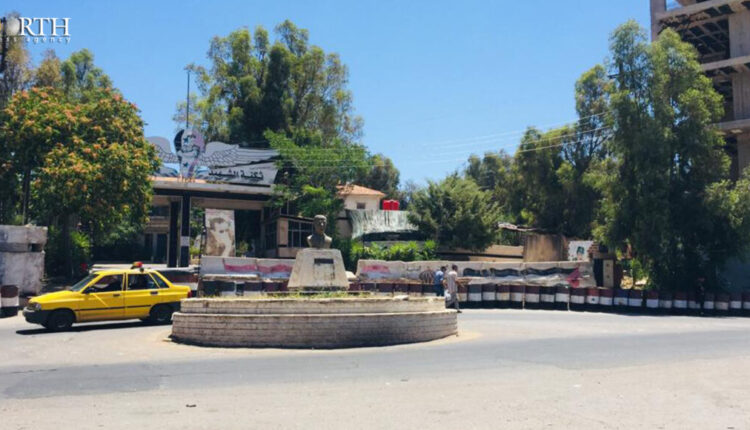
By Razan Zeinaddin
SUWAYDA, Syria (North Press) – Recently, Suwayda Governorate in southern Syria has witnessed a number of scenarios regarding the military aspect including convoys of militias affiliated with the Syrian government forces heading deep in the desert of Suwayda, the formation of local military councils, and the threat of the revival of the Islamic State (ISIS) in the area. These incidents left everyone baffled and wondering about the triggers behind them.
After years of being a hotbed for smuggling narcotics, the desert in the east of Suwayda has morphed into a conflict zone between two parties. One party wants to secure its border along the desert, and the other advances armed forces to maintain its control over the area.
Suleiman Abdulbaqi, leader of the Ahrar Jabal al-Arab movement in Suwayda, told North Press that the military movements that occur in the desert are carried out by “Iranian-backed and Afghani militias in addition to Lebanese Hezbollah militias along with the Syrian government forces and militias affiliated with the Military Security.”
Ahrar Jabal al-Arab was founded in February 2022 by a group of activists, led by Sheikh Suleiman Abdulbaqi. It calls for a democratic, fair and civil state, revealing the fate of the arrestees, and combating corrupation and drug-smugglers.
Presently, those factions attempt to station in the desert that expands all the way to the Jordanian border.
“Ramping up forces in the area comes in a bid to keep it under their controlled, being a passageway for smuggling drugs and weapons to Jordan,” Abdulbaqi said.
The forces in the desert are establishing outposts and bringing reinforcements. Not long ago, they brought military convoys to their posts in eastern Suwayda, Abdulbaqi added.
Late in July, thousands of Iranian-backed militants entered the desert, according to a previous statement by Abdulbaqi to North Press.
Early in August, a circulated footage showed a group of people from Suwayda claiming to join the Military Council led by Brigadier General Manaf Tlass, which includes defectors from the government forces.
Manaf Tlass is the cousin of former Syrian Minister of Defense, Mustafa Tlass, and one of the highest-ranking military figures who was serving within the ranks of the Syrian Republican Guard. He was the first commander of the Republican Guard to defect from the Syrian forces and declare support for the opposition.
Hafez Qarqut, a writer and politician, said to North Press, “The Military Council tried to communicate with defected members who are originally from Suwayda to enlarge its own popular incubator across Suwayda.”
However, Qarqut reckons the influence of the Military Council over Suwayda will be limited and related to international decisions and actions.
“There will be no actual activation of the Military Council’s role without international support, no matter the large numbers it recruits,” Qarqut added.
Using ISIS
The presence of military factions in Suwayda’s desert sparked concern and fear among the local population, particularly fear of using ISIS to attack Suwayda.
Abdulbaqi pointed out that the area currently occupied by these factions were previously ISIS forts.
Abdulbaqi rules out the presence of ISIS militants. However, he speculates that some ISIS militants operate under the guise of Iranian-backed militias.
He highlighted that these remnants are now being utilized by the Syrian government and its affiliated militias, either for launching attacks on Suwayda or intimidating its residents. The threat posed by ISIS continues to persist in the eastern desert of Suwayda.
Abdulbaqi stressed “even though the people of Suwayda constantly fight against gangs, the regime is likely to resort to utilizing them. Currently, efforts are underway to strengthen the regime’s military militias and remaining members of gangs in order to solidify its presence in the region.”
In December, 2022, the Suwayda Governorate witnessed widespread public protests rejecting the political and economic situations in the governorate. The protests then turned into clashes between the protesters and the security forces, which resulted in casualties and material damage.
